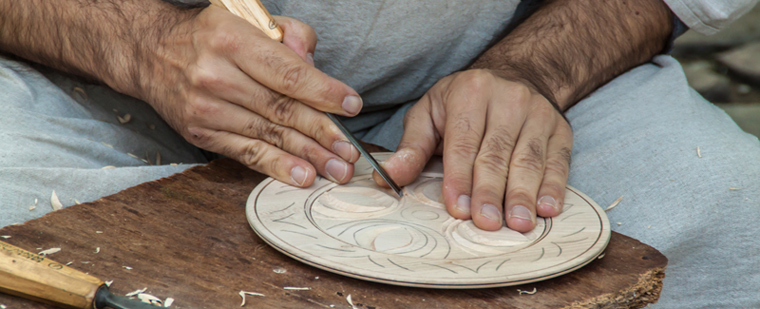Traditional Wood Carving Techniques
One of the most astounding aspects of the world around us is the way that we embrace so many unique cultures and traditions across the world. In Korea, a huge tradition is that of engraving – especially wood. Traditional Korean craftsmen were known as the “gakajang” and were a renowned collection of artisans who engraved letters and pictures onto wooden plates.
One of the few remaining gakajang today, Kim Gak-Han, has worked with a variety of different wooden items throughout his life – from cabinet and shelving to ancient texts. Having carried on the traditions of those who came before him, Kim’s work was recently included in a series of Confucian printing woodblocks.
These were recommended by the Korean government to be included in the UNESCO Memory of the World Register.
The Confucian technique itself follows a rigid structure – using a carving knife at a 45-degree angle, the message is then created by a Joseon craftsman. It’s known as the “basic” angle throughout Korean architecture and art. This angle is commonly found on both a hanbok’s sleeves and a hanok’s eaves. This is a traditional Korean garment, as well as a traditional Korean building.
While in Japan they hold their knives at a 90-degree angle, in Korean culture art is crafted at the 45-degree range instead. The change in angle makes the Korean art more effective at creating lines with their sculptures, even allowing for circle carvings which are far more difficult to do in Japanese art. The actual differences between Korean, Asian and Japanese calligraphy can be quite nuanced to Western audiences, but to those from these respective countries the differences are fairly stark.
At the height of their artistic prominence, the Confucian Carvings were extremely expensive to make. They were typically used to create long-term homes for wisdom and scholarly writings, as well as poetry. Due to the expertise required to do the job properly, the expense of a Confucian carving at their height would have been roughly the equivalent of that of a male servant!
Today, though, the art has returned to its Buddhist roots. The remaining gakajang either work with the Buddhist temples to make scriptures, or teach sculpting classes whilst making ornaments on the side.
Kim himself struggled for many years due to the lack of expense in the industry, and early in his life he worked as a joiner’s assistant before touring to an Oh Ok-Jin tournament. Ok-Jin was a renowned sculpture and held regular exhibitions. Kim chanced upon the event as he was in the capital of Seoul getting treatment for breaking both of his ankles.
His limited mobility made him think about what he might do if he would never walk again, and the idea of sculpting immediately appealed. He came across the famous Suseonjeondo, a drawing of Seoul by the famous cartographer Kim Jeong-Ho in the mid-1840s. It was to be this stunning piece that changed his entire perspective on art, and he then became a student of Ok-Jin. His experience as a joiner now paid off, as he caught up with his classmates quickly.
He has since gone on to learn more about the subject through studying a Tripitaka Koreana. This 800-year-old set of Buddhist scriptures is engraved across more than 80,000 different woodblocks. Additionally, his studies have taken in Joseon woodblocks that were used to print the writings of Yi Hwang, one of the most prominent Confucian scholars of the entire Josean era.
As one of the last true artisans of his kind, Kim spends time lecturing at universities about traditional calligraphy and engraving, visiting various parts of the nation to help keep one of the proudest Korean traditions alive. Some of his key works include replicas of the Confucian and Buddhist woodblocks, including the Jijki, for restoration and research purposes. His craft may be one that less people know about than a few years ago, but it’s certainly something that Kim helps to keep alive and well through his various teaching sessions!
Still in search for a successor in the long-term, Kim believes that his teaching time is because of this search. He wants to find someone with a deep interest in calligraphy, the same interest that drew him to the subject in the first place. Because of the lack of earning potential in a career in this kind of lifestyle, many young people are put off by the prospect of taking on calligraphy as a long-term vocation, rather than just a nice hobby that they enjoy.
It’s something that perhaps we should lament, that there could be a loss of generation’s worth of teachings to society. These are some of the most important aspects of Korean history and culture, and to lose them due to a lack of financial gain would be a massive & complete irony.

